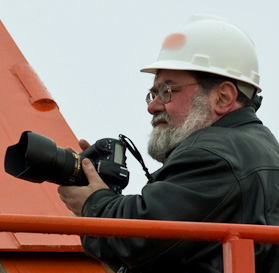In February I redesigned most of my workflow around Lightroom 4. The only thing remaining was to become much more familiar with the Lightroom’s print module. Coincidentally, Mike Johnston of “The Online Photographer” blog recommended making one print every day for 90 days to improve your printing skills. I decided to follow a shortened version of his plan with the goal of getting more familiar with Lightroom 4 and, maybe, improving my printing skills in the process.
For the last 30 days I've made a new print every day and posted the result. I've learned (or have been reminded of) a lot along the way, but here are the five things that stand out.
1 – The 2012 process engine in Lightroom 4 is much better at pulling detail from raw files. It also seems there are subtle improvements in color rendition. I reprinted several older photos that had been processed with the 2003 and 2010 versions of the process engine. Every one of them was improved just by rendering with the 2012 version. This alone would be a reason to upgrade to the most recent version of Lightroom.
2 – No matter how well your monitor and printer are profiled and calibrated, you will still need to make test prints. Many prints may be fine on the first try, however, the fundamental differences between front-lit prints and back-lit screens will mean, sometimes, the only way to achieve your desired results will require a test print or two.
3 – The printer inks are capable of printing a wider range of blues and greens than the monitor can display. Be careful when boosting blue skies. What looks good on the screen may end up as an electric blue sky. This is most likely due to the differences in color spaces used by the monitor (sRGB) and printer (Adobe1998.) That topic is way too deep for this list. I finally figured out that using the soft-proofing gamut warning helped avoid the problem.
4 – I added a vignette to some of the photos. The characteristics of the vignette were a bit different on paper. It seemed a bit darker and less subtle than on the screen. I have a feeling this varies a bit with paper types. Only one paper was used during the 30 day project so this is something left for future experimenting.
5 – The Printer wants to be regularly used. I had been setting aside images and printing in batches. Starting the printer after it hadn't been used for a few weeks usually required one or two cleaning cycles to get things smoothly flowing again. There is nothing magic about a cleaning cycle. The printer flushes the lines and nozzles with ink, the most expensive liquid on the planet.
In 30 days of printing one print per day I didn't experience a single cleaning cycle. The printer used much less ink than I expected. Most of the ink tanks were close to full at the start. All but two are still, at least, half-full. Over the length of the project, only the grey, green and red ink tanks were replaced. From now on I’ll print, at minimum, a nozzle check sheet every day. Over the long haul, I suspect I’ll use much less ink.
At project’s end, I feel like I’m familiar enough with Lightroom’s printing module to say it’s now my preferred way to make prints.
gs
